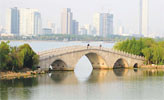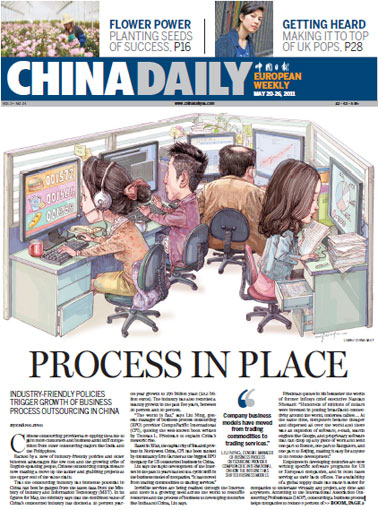Society
US weather extremes show 'new normal' climate
Updated: 2011-05-19 14:15
(Agencies)
WASHINGTON - Heavy rains, deep snowfalls, monster floods and killing droughts are signs of a "new normal" of extreme US weather events fueled by climate change, scientists and government planners said on Wednesday.
"It's a new normal and I really do think that global weirding is the best way to describe what we're seeing," climate scientist Katharine Hayhoe of Texas Tech University told reporters.
"We are used to certain conditions and there's a lot going on these days that is not what we're used to, that is outside our current frame of reference," Hayhoe said on a conference call with other experts, organized by the non-profit Union of Concerned Scientists.
| ||||
Hayhoe, other scientists, civic planners and a manager at the giant Swiss Re reinsurance firm all cited human-caused climate change as an factor pushing this shift toward more extreme weather.
While none would blame climate change for any specific weather event, Hayhoe said a background of climate change had an impact on every rainstorm, heat wave or cold snap.
"What we're seeing is the new normal is constantly evolving," said Nikhil da Victoria Lobo of Swiss Re's Global Partnerships team. "Globally what we're seeing is more volatility ... there's certainly a lot more integrated risk exposure."
In addition to more extreme local weather events, he said, changes in demographics and how materials are supplied make them more vulnerable.
"In a more integrated economic system, a single shock to an isolated area can actually end up having broad-based and material implications," da Victoria Lobo said. For example, if a local storm knocks out transport and communications systems, "someone 1,000 miles (1,600 km) away is not receiving their iPad or their car."
Aaron Durnbaugh, deputy commissioner for natural resources and water quality for Chicago, said adapting to climate change is a daunting task.
Citing the down-to-earth example of Chicago's 4,400 miles (7,080 km) of sewer mains, which were installed over the last 150 years and will take decades to replace, Durnbaugh said accurate forecasting of future storms and floods is essential.
The city of Chicago's cost of dealing with extreme weather events through the end of this century has been conservatively estimated in a range from $690 million to $2.5 billion, Durnbaugh said, with the cost to homeowners and local businesses expected to be far higher.
Globally, da Victoria Lobo said the annual average economic losses from natural disasters have escalated from $25 billion in the 1980s to $130 billion in the first decade of the 21st century.
E-paper

Green works
Wuxi becomes 'test case' for facing country's environmental challenges
Preview of the coming issue
The global rise of Chinese brands
China-EU trade on solid ground
Specials

The song dynasty
There are MORE THAN 300 types of Chinese operas but two POPULAR varieties are major standouts

Cut above the rest
One of the world's oldest surgeons has performed more than 14,000 operations

From the ground up
Architect of Guangzhou Opera House has many projects under way, including 2012 Olympics.




